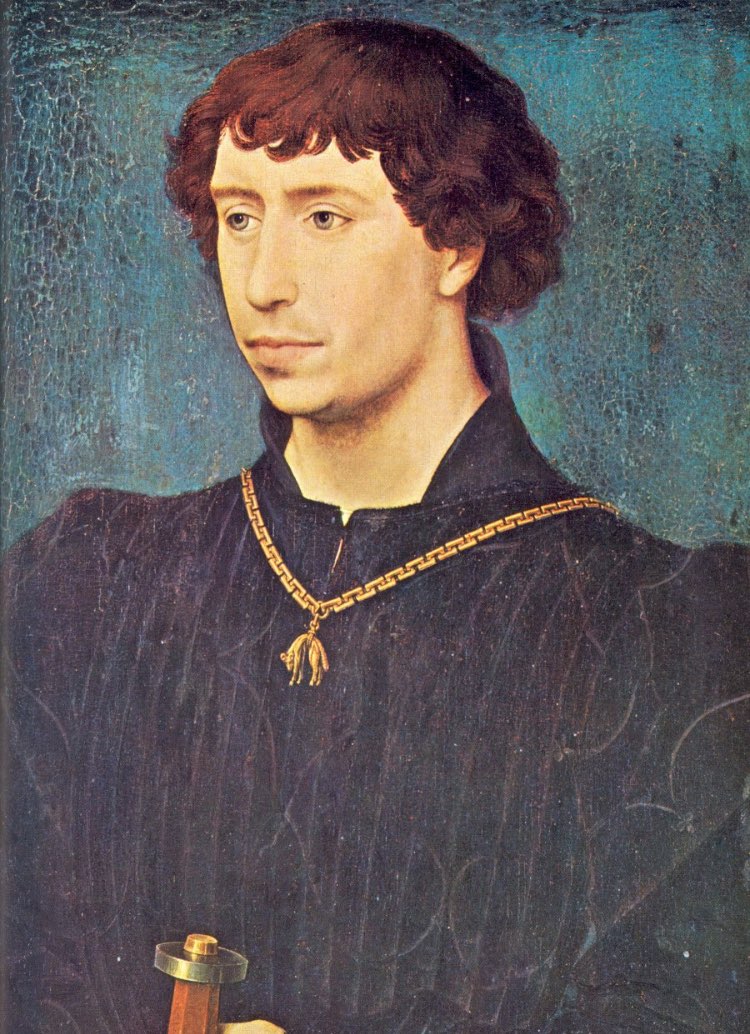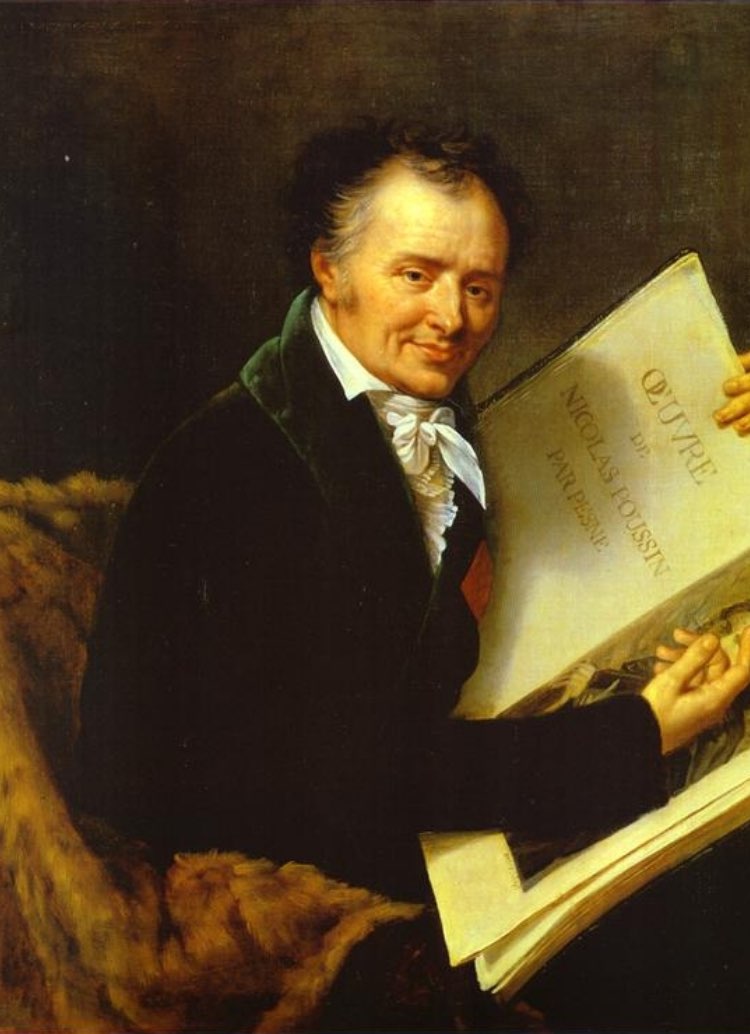

Paul Beneke
The triptych was painted in 1467–1473, commissioned by Florentine banker Angelo Tani, head of the Bruges branch of the Medici Bank. The painting was intended for the family chapel at the Church of St Bartholomew in Badia Fiesolana near Florence. However, it never arrived at its destination and its founder likely never saw the finished painting. In 1473, on its way from Bruges to Italy, the galleon San Matteo, which carried the triptych, was plundered by Gdańsk privateers commanded by Paul Beneke and tugged to the port of Stade (which belonged to Hamburg).
The ship also contained textiles, leather, furs, valuable and extremely valuable alum (a mineral used to fix dyes). The triptych was handed over to three Gdańsk patricians, the owners of Beneke’s privateer ship and members of the Brotherhood of St George, who donated the triptych to St Mary’s Church. The painting was hung on a pillar by the Chapel of St George as private property of the Brotherhood. Today, the triptych is displayed at the National Museum in Gdańsk.

painting by: Rogier van der Weyden
Charles the Bold
Charles the Bold, son and successor of Philip the Good, was the last Duke of Burgundy, 1467–1477. It was during his reign that the triptych was painted in Bruges, while Angelo Tani (the work’s founder) was involved in the funding of the marriage of the Duke and Margaret of York in 1468. The decorations for the celebration were made by Memling himself. It was Charles the Bold who first intervened in the matter of the galleon seized by the Gdańsk privateer. He also sent a letter to the Gdańsk Town Council in which he demanded the return of the stolen cargo. However, the Duke’s intervention proved fruitless. After his death in 1477, Burgundy had to deal with far more important matters. The Duchy formally ceased to exist with its lands divided between the French Crown and the Habsburgs. Hans Memling portrayed the Duke as one of the apostles on Christ’s left side.

painting by: Martino Rota
Rudolf II
From the very beginning, the Gdańsk triptych caused admiration and envy. According to an account by French diplomat Charles Ogier, who stayed in Gdańsk in 1635, Emperor Rudolf II himself, a great art lover and expert, owner of one of the biggest art collections in Europe, wanted to buy the painting for 40,000 thalers. The Town Council refused the Emperor’s offer.
Tsar Peter I
Tsar Peter I, a connoisseur of Netherlandish painting, also wanted to have Memling’s work as part of his impressive art collection. He stayed in Gdańsk twice, in 1716 and 1717, during the Great Northern War. During his first visit, he toured the city’s most important buildings, including St Mary’s Church. After he had left, negotiations began on the contributions that Gdańsk was to pay for the Russian army to leave the city. The agreement signed on 19 September 1717 had Gdańsk pay 140,000 thalers, sever its trade relations with Sweden and open its port to Russian vessels.
Furthermore, the Tsar wanted to have the Gdańsk authorities make a gift of The Last Judgement to him as a token of their gratitude for the successful conclusion of the negotiations. In spite of the refusal, the Russians did not give up and sent another letter arguing that an Evangelical church, in keeping with the teachings of Martin Luther, should not care so much about keeping the painting. Underscoring the triptych’s historical value to the city, the Gdańsk authorities terminated the negotiations and the Tsar finally gave up.

painting by: Robert Lefèvre
Dominique Vivant Denon
In 1807, Gdańsk was occupied by Napoleon’s army. Shortly thereafter, Dominique Vivant Denon, the head of the Musée Napoléon, came on a mission to confiscate the most valuable works of art he could find in all the conquered cities and take them to the Louvre. The triptych left Gdańsk for the first time in 330 years to be taken to Paris. For the next eight years, under museum inventory number 563, it was exhibited at the Louvre as a work by Jan van Eyck.
Johann Gottfried Schadow
After the fall of Napoleon and the entry of the Prussian Army to Paris, the repossession of the art stolen by the French began. The Last Judgement was the first artwork to be removed from the Louvre. However, it did not return to Gdańsk straight away. First, it was taken to Berlin, where it was shown to the general public and again met with admiration. The head of the Berlin Academy of Arts, sculptor Johann Gottfried Schadow, wanted to keep the triptych in Berlin and sent an appeal to Prussian monarch Frederick William III asking him to break his earlier promise to return the altarpiece to St Mary’s Church in Gdańsk.
We owe the painting’s return to Gdańsk to the tough and consistent policy of the Gdańsk Town Council and the involvement of Johann Adam Breysig, the then head of the School of Fine Arts. Following long diplomatic negotiations and many weeks of correspondence, in January 1817 the triptych came once again to be displayed in St Mary’s Church, this time in St Dorothy’s Chapel. After 1934, it was moved to the Chapel of St Reinhold.
Willi Drost
During World War II, an extensive campaign to secure and evacuate works of art was led by Willi Drost, the then director of the Stadtmuseum (now the National Museum in Gdańsk). In 1942, Gdańsk’s most valuable work of art was taken out of the city and hidden in the Evangelical Church in Meiserwalde (now Mierzeszyn). After the first carpet bombings of German cities, Drost chose three works of art from Pomerania to be evacuated deep into the Reich.
These, of course, included the Gdańsk triptych. In September 1944, it was taken to Thuringia and hidden in a village church in the Rhön Mountains. In 1946, it was discovered by the Red Army and sent to the Hermitage Museum in Leningrad (now St Petersburg). It returned to Poland 10 years later: first to Warsaw, where it underwent research and restoration, to be finally transferred to the Pomeranian Museum (now the National Museum) in Gdańsk, where it remains to this day.
An animated history of „The Last Judgement”

